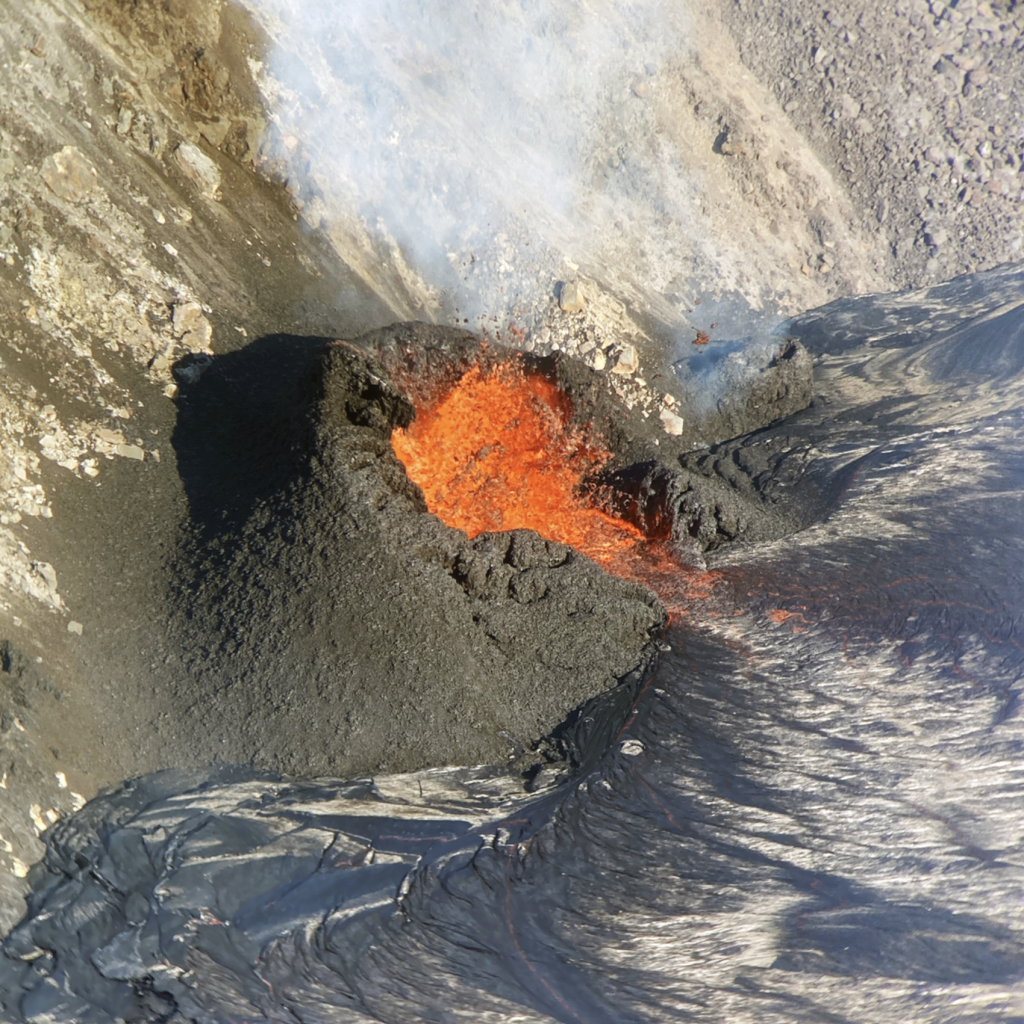Scientists Say it is Unclear How Long the Current Kīlauea Eruption Will Last

Scientists with the USGS Hawaiian Volcano Observatory say it is unclear how long the current eruption at Kīlauea will last, but note that it is similar to the most recent one that lasted for five months from December 2020 to May 2021.
According to the HVO, Kīlauea summit eruptions over the past 200 years have lasted from less than a day to more than a decade.
The latest eruption began on Sept. 29, 2021 within Halemaʻumaʻu crater within Kīlauea’s summit caldera in Hawai‘i Volcanoes National Park.
“Vigorous fountaining—with bursts up to 164–197 feet—produced significant amounts of pumice, Peleʻs hair, and fragments of volcanic glass that were deposited in areas downwind along the rim and beyond Halemaʻumaʻu crater. Over the past several days, a thick layer (approximately 89 feet) of molten lava has accumulated as a lava lake at the base of the crater, partially drowning the vents resulting in subdued fountaining,” according to the HVO.
HVO scientists say, “During the same time, the amount of sulfur dioxide (SO2) emitted has dropped from 85,000 tons per day (one metric ton equals 2,200 pounds) to 12,000 tons a day. Although the amount of gas and volcanic particle production has decreased since the eruption onset, they both remain significant local hazards within the plume. Concentrations of SO2 at the vents remain high (likely over 100 parts per million or ppm) and significantly elevated (5-10 ppm) at stations a few kilometers (a couple of miles) southwest of Halemaʻumaʻu.”
According to the latest update issued this morning, the HVO does not see any indication of activity migrating elsewhere on Kīlauea volcano and expects the eruption to remain confined to the summit region.
HVO is lowering Kīlauea’s volcano alert level to WATCH and its aviation color code to ORANGE, reflecting the less-hazardous nature of the ongoing eruption.
Scientists say other significant hazards remain around Kīlauea caldera from Halemaʻumaʻu crater wall; ground instability, ground cracking, and rockfalls can be enhanced by earthquakes within the area closed to the public. “This underscores the extremely hazardous nature of Kīlauea caldera rim surrounding Halemaʻumaʻu crater, an area that has been closed to the public since late 2007,” according to the HVO.










